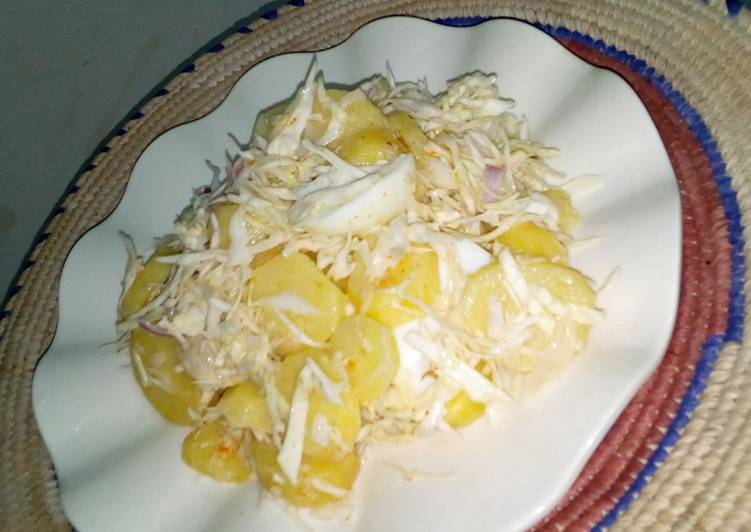
Hey everyone, it’s Louise, welcome to my recipe page. Today, we’re going to prepare a special dish, furikake from leftover dashi stock packs. It is one of my favorites. For mine, I will make it a little bit tasty. This will be really delicious.
Homemade furikake is rice seasoning made with leftover kombu and katsuobushi from making dashi. This quintessential Japanese rice seasoning is fabulous on rice of course, but also on onigiri, udon noodles, soup, salad, boiled egg, popcorn, and more! Furikake (ふりかけ) is a nutty, crunchy.
Furikake from Leftover Dashi Stock Packs is one of the most popular of recent trending foods in the world. It is appreciated by millions every day. It is simple, it’s fast, it tastes yummy. Furikake from Leftover Dashi Stock Packs is something which I have loved my whole life. They are nice and they look fantastic.
To get started with this recipe, we have to first prepare a few ingredients. You can cook furikake from leftover dashi stock packs using 11 ingredients and 8 steps. Here is how you can achieve it.
The ingredients needed to make Furikake from Leftover Dashi Stock Packs:
- Get 10 packs Leftover dashi stock packs from making dashi stock
- Prepare 1 Leftover kombu from making dashi stock (optional)
- Get Seasoning ingredients:
- Make ready 1 tbsp Sake
- Prepare 1 tbsp Mirin
- Get 2 tsp Sugar
- Take 2 tsp Soy sauce
- Get 5 tbsp Water
- Make ready 1 tbsp Roasted sesame seeds
- Take 1/2 sheet Roasted nori seaweed (finely shredded)
- Get 2 tsp or (to taste) For mature palates: parboiled sansho (optional)
Japanese Awase Dashi - Fish Stock. This video will show you how to make Furikake (Japanese rice seasoning / rice sprinkles) using leftover Dashi ingredients: Kombu (kelp), Katsuobushi (bonito. Sold by Eitas Japan and ships from Amazon Fulfillment. Marumiya popular sprinkled I was packed in sachets each.
Steps to make Furikake from Leftover Dashi Stock Packs:
- These are the dashi stock packs leftover from making dashi stock. Let them cool, empty the contents from the sachets, transfer them into a container, and freeze. Keep adding to it little by little.
- Let the kombu cool after making the dashi stock, and finely chop it. Add to the container from Step 2, a little each time.
- Once the container is full of leftover dashi and chopped kombu, it's time to make furikake! Defrost the contents of the container. I transferred the container from the freezer to the fridge the night before.
- The contents weighed about 100 g before cooking.
- Roast the dashi pack contents and kombu in a pot over low heat while breaking them up.
- When they are finely broken up, add the sansho to taste, then add all of the seasoning ingredients. Simmer slowly over low heat, scraping the bottom and sides of the pot with a spatula.
- When most of the moisture has evaporated (be careful not to evaporate the moisture too much!), add the roasted sesame seeds and shredded nori seaweed, mix evenly, and it's done.
- It's warm and soft when freshly made. Let cool thoroughly before transferring into a container.
Dashi is Japanese soup stock, or broth which contains extracted Umami components such as amino acids and flavours from Dried bonito fillet(Katsuobushi), kelp(Konbu), dried Dashi's fundamental role is to supplement the ingredients' natural Umami flavour to balance the overall taste of Japanese dishes. Note: With the leftover kombu and katsuobushi you can either do another batch of dashi - called Niban Dashi (second dashi), which would be not that strong flavoured as the first batch (Ichiban Dashi) or you can make homemade rice seasoning Furikake (see below). In the case of awase-dashi and katsuo-dashi, after making stock from the above ingredients, you can make another batch of dashi stock by reusing the ingredients. Add the water and the leftover katsuobushi and konbu from ichiban-dashi to a pot over high heat. Awase dashi, katsuo dashi and kombu dashi, in their first incarnations, are referred to as ichiban dashi, or first dashi.
So that’s going to wrap it up for this exceptional food furikake from leftover dashi stock packs recipe. Thanks so much for reading. I’m confident you will make this at home. There’s gonna be more interesting food at home recipes coming up. Don’t forget to bookmark this page on your browser, and share it to your loved ones, colleague and friends. Thank you for reading. Go on get cooking!


